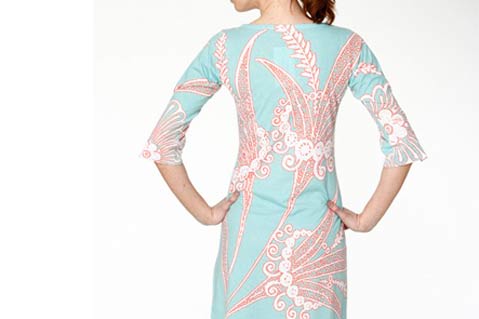Strategy January 12, 2017
Break Into All-Over Sublimation
 Companies like Under Armour have put polyester performance wear in huge demand, and dye sublimation goes hand in hand with polyester. All-over dye-sublimated garments can command $50 to $100 each, and your cost to produce should be in the $10 to $15 range if you are creating garments efficiently. Even if you’re working with a contractor, your cost should still be only about $25 to $30 each. I’m horrible at math, but those margins are something many screen printers would love to see. The process is clean and easy: You push print, transfer to your garment and deliver to customers. No color separations, screens to burn, messy ink or pretreatment. Just profit!
Companies like Under Armour have put polyester performance wear in huge demand, and dye sublimation goes hand in hand with polyester. All-over dye-sublimated garments can command $50 to $100 each, and your cost to produce should be in the $10 to $15 range if you are creating garments efficiently. Even if you’re working with a contractor, your cost should still be only about $25 to $30 each. I’m horrible at math, but those margins are something many screen printers would love to see. The process is clean and easy: You push print, transfer to your garment and deliver to customers. No color separations, screens to burn, messy ink or pretreatment. Just profit!
There are two ways to create an all-over sublimated print. One is to print first, then cut and sew, and the other is decorating on a finished garment. The second method saves the time, cost and effort of sewing your own shirt. The downside is that you’ll have some blemishes and areas that don’t transfer well. We call those smiles, but you do have to prepare for that in your design process. Cut-and-sew sublimation is more common with sports jerseys and solid, bold colors. The fashion and design sector does more decoration on finished garments, where the smiles blend right in with the art.
To create all-over dye-sub apparel , you need wide-format equipment, including a wide-format heat press. Prepare to spend at least $30,000 on a 44” roll-feed printer and a 44”-by-64” heat press. To get into cut-and-sew printing, extend your budget to the $100,000 range. Don’t let the initial investment fool you. You can lease equipment and easily cover the payment with your profits from all-over decorating.

When it comes to artwork, size is critical. Make sure you have a minimum of 150 dots per inch (DPI), though 200 DPI would be better. Remember, the DPI should be at the final size of the shirt being printed, so make sure you have artwork prepared for all the different-size shirts you’ll be creating. If you’re printing on finished garments, make sure the artwork prints in the shape of the shirt you’re using, not just a square box. This saves ink costs and makes lining up your transfer with the shirt much easier. Lastly, make sure there is plenty of bleed area on your print-out. I suggest at least 2” over the size of the largest shirt you’ll be creating. The cost of the extra ink is much less than the cost of ruining a garment.
To reduce smiles, choose garments with straight sleeves and small hemlines. Make sure you take extra time to lay the shirt out as flat as possible before printing. For cut-and-sew operations, you can print in two way: Either imprint your transfers onto a roll with a drum-style press, or sublimate the precut pieces by laying them on a flat press or on a piece table attachment for your drum press.
Here are some of the markets demanding all-over dye sublimation:
Fashion and retail: Mainstream retailers like Kohl’s and New York & Co. are selling sublimated shirts. Joe Werner, one of the owners of St. Louis brand Before+Again Clothing explains that sublimation allows his brand to be a “just-in-time manufacturer.” The company can turn around highly creative pieces with low minimums, and react quickly to trends.
Sports jerseys: For years, the jersey industry was dominated by dye houses and vinyl lettering. Now, however, polyester performance with moisture-wicking technology is becoming the new normal. You no longer see a solid-color jersey with a one- or two-color name and number. You’re now seeing excellent designs, multiple colors and more.
Swimsuits: Athletes have long looked for a swimsuit that helps them move through the water faster. In 1924, the British Olympic swim team wore silk to reduce drag. Today’s elite swimmers wear something more akin to sharkskin. These suits are typically made of polyester performance fabric, with a bold, bright decoration that stands out in the pool.
Outdoor sports: Hunting, fishing, paintball, cycling and more all wear polyester performance garments.
In addition, sublimation allows you to decorate items like cell phone cases, baby blankets, coffee mugs, doormats and more. The possibilities are nearly limitless.
This column was adopted from a post on Aaron Montgomery’s blog. Read the full post here. Aaron Montgomery has been in the garment decorating and personalization industry since 2000 and in digital printing since 1997. He is the cohost of popular industry podcast 2 Regular Guys.
